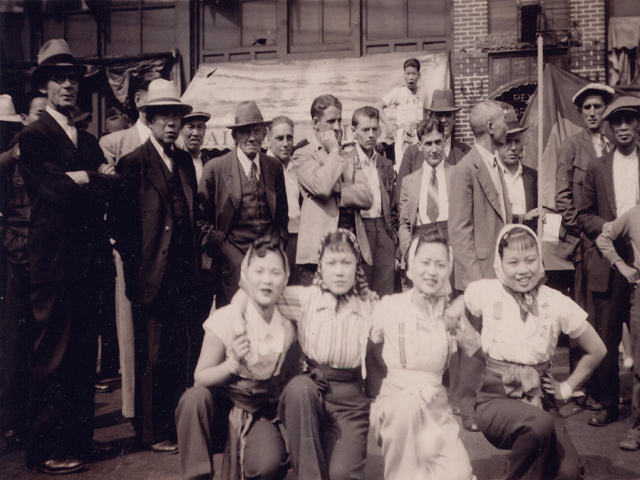Hune, Bernice
Bernice Hune is a professional storyteller, arts educator, and visual artist, currently residing in Toronto, Ontario. Much of her storytelling material draws from Chinese Canadian history, Chinese culture and her family history. According to Bernice, her paternal grandparents fulfilled the Gum San (Gold Mountain) dream. Her grandfather Hune Quon was a jeweller in Vancouver, British Columbia and his wife, Chew Shee, gave birth to seven children. Hune Quon sold his jewelry shop and built a house in Shiu Bu, Toishan County, China, bringing the entire family to China in 1929. After several years in China, Bernice’s father Don Hune returned to Canada fluent and literate in English and Chinese, a quality valued by Gar Yin Hune (née Deer Gar Yin), whom he met and married in Toronto. Gar Yin Hune came to Canada in the late 1930s as a visiting Cantonese opera acress. She and Doug gave birth to Bernice in 1947. Bernice recalls a period of family reunification when members of her extended family arrived in Canada following the lifting of immigration restrictions. Growing up in suburban Toronto, Bernice remembers her family’s weekly trips to Chinatown with fondness, and how her mother felt most at ease surrounded by a familiar language, food, and culture. Bernice feels that 1967 was a turning point for Chinese Canadian women – because of immigration laws, a growing awareness of Chinese Canadian history and the second wave feminist movement among women of the baby boomer generation.
On stage, Gar Yin Hune (bottom, right) played the Fa Daan (heroine) role. Her Cantonese opera troupe was invited by the Jin Wah Sing Musical Society to perform for Vancouver, British Columbia’s Chinese community. As her grandson Nicholas Hune-Brown notes in a 2007 article for The Toronto Star: ‘In the photo, you get the impression that the arrival of these four young women was a major event in Chinatown life.’ During the Exclusion Period (1923-1947), the gender imbalance among Chinese Canadians created what was known as ‘bachelor societies’.


 of
of 

